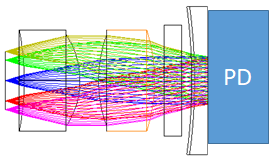Dear All.
I wonder if it is possible to analyze the amount of incident energy according to tolerance through Criterion's 'Merit Function' or 'User Script' in the SC rather than the NSC during tolerance analysis. (I want using Monte Carlo Simulation)
Energy is important because the amount of incident light determines the performance of the optical system.
Energy change due to AR coating repeatability is considered separately.
Thank you in advance.
Best answer by Sandrine Auriol
View original






